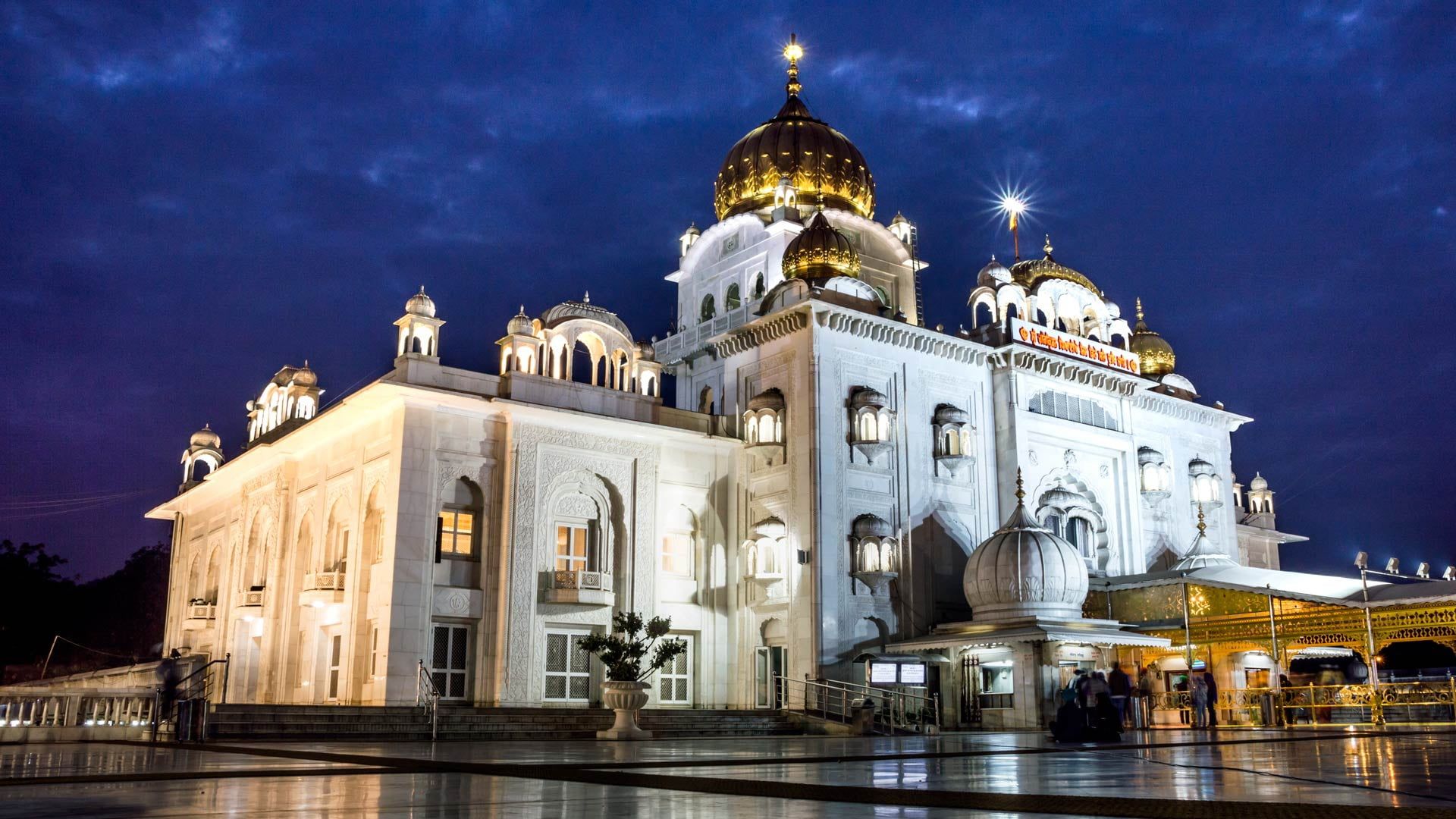
Gurudwara Bangla Sahib, situated in the heart of New Delhi, stands as a symbol of spiritual devotion and selfless service. This sacred Sikh shrine is not only a place of worship but also a symbol of Sikh values, history, and heritage.
History
The history of Gurdwara Bangla Sahib dates back to the 17th century. It was originally a bungalow (or "Bangla" in Hindi) owned by Raja Jai Singh, a Moghal noble during the reign of Emperor Aurangzeb.
The eighth Sikh Guru, Guru Har Krishan Ji, stayed at this bungalow in 1664 during his visit to DelhiDuring this visit of Guru Sahib the people of Delhi were suffering from smallpox epidemic. Guru Sahib out of love and compassion for suffering humanity dipped his holy feet in water and poured charan amrit into a small chaubacha (tank). All those who drank the water were cured from the disease and thus the people of Delhi were saved from the deadly epidemic . His selfless service and healing presence earned him the admiration of the locals.
In honor of Guru Har Krishan Ji's visit and service, Raja Jai Singh donated a bungalow to the Sikh community and thus the foundation of Gurdwara Bangla Sahib was laid and it became a place of worship and service .
Architecture
The architecture of Gurdwara Bangla Sahib in Delhi is a blend of both traditional and contemporary elements, reflecting the rich Sikh heritage and the demands of modern urban life.One of the most iconic features of the gurdwara is its stunning golden dome, which can be seen from a distance. This dome symbolizes the spiritual and divine aspect of the gurdwara.
Gurdwara Bangla Sahib has a large sarovar (sacred pool) in its complex, which is a central element of Sikh gurdwara architecture.The main prayer hall of Gurdwara Bangla Sahib is a spacious and peaceful area where Sikh religious ceremonies, including kirtan (devotional singing) and the reading of Guru Granth Sahib (the Sikh holy scripture), take place.
Sarovar Sahib
At the heart of Gurudwara Bangla Sahib is the Sarovar, a sacred pool of water that symbolizes purity and spiritual purification . Devotees visit the Sarovar to participate in the ancient tradition of isnan, or purification, which is believed to purify the soul and renew the spiritual journey . Amidst the tall buildings of New Delhi, the Sarovar (sacred pool) stands out, reminding us of the lasting significance of Sikh spirituality
Langar
The langar of Gurudwara Bangla Sahib is the epitome of the Sikh principle of selfless service. It operates 24 hours a day and offers free meals to anyone who walks in, regardless of background. This practice instills humility, equality and a sense of community in all who participate in the Langar. This practice not only addresses hunger but also reflects the spirit of unity and equality.
Community Service
Gurdwara Bangla Sahib is not just a place of worship; it is also a center for community service. The institution of the langar mentioned above is an evidence to the Sikh commitment to feeding the hungry and promoting equality. The spirit of seva (service to self) is rooted in the Sikh faith and shines brightly at Gurdwara Bangla Sahib.
In times of crisis, Gurdwara Bangla Sahib has consistently risen to the occasion by providing shelter, food and assistance to those in need. Be it natural disasters, political unrest or public health crises, the Gurdwara has opened its doors to provide comfort and support to those affected. During the COVID-19 pandemic, Gurdwara Bangla Sahib's langar service has expanded its reach to serve healthcare workers and those under quarantine. This act of kindness and support captured the hearts of people nationwide and highlighted the gurdwara's role as a medium of hope.
Spiritual Events & Celebrations
Gurdwara Bangla Sahib, like many other Sikh gurdwaras, hosts various celebrations and events throughout the year. These festivals are an integral part of Sikh religious and cultural life and often attract large congregations of devotees and visitors.
Gurpurabs mark the birth anniversaries of the Sikh Gurus. The Gurpurabs of Guru Nanak Dev Ji, Guru Gobind Singh Ji, Guru Harkrishan ji and other gurus are celebrated with special prayers, kirtan (devotional singing) and readings from the Guru Granth Sahib. Langar is served to all participants.
Nagar Kirtan, which is a religious procession, is also organized on special occasions. It includes the singing of hymns, the carrying of the Guru Granth Sahib in a beautifully decorated palanquin and a lively presentation of Sikh culture and tradition.The ceremony of Amrit Sanchar,which is a significant event, also occurs regularly.
Conclusion
Finally, Gurudwara Bangla Sahib is a sign of spirituality, compassion and selfless service. Its historical significance, architectural beauty and commitment to seva (selfless service) and community make it a place of respect , devotion and inspiration for Sikhs and people of all faiths.
Note- We have made every effort to ensure the accuracy and reliability of the information provided. However, this content is intended for informational purposes only and reflects historical and cultural perspectives. DVN does not assume responsibility for any disputes or actions that may arise from the use of this content. If you believe any information is incorrect or misleading, please contact us.